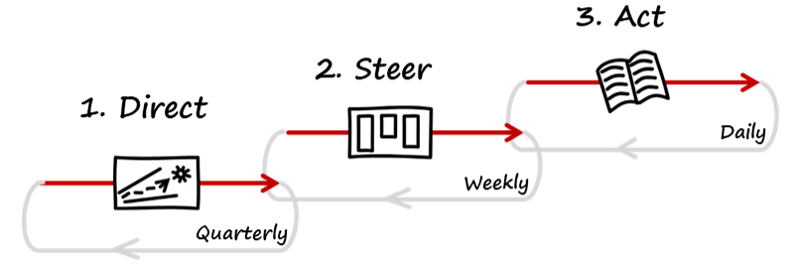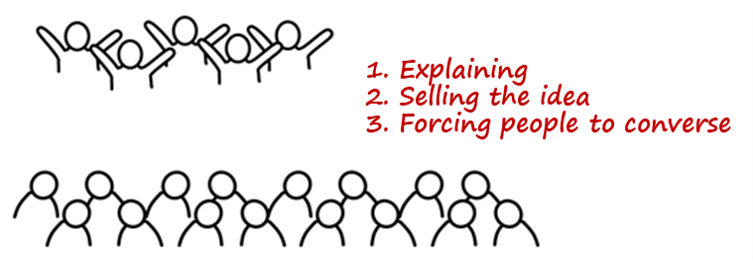
The Biggest Mistakes in the Strategy Process — Mistake 3: The Strategy Is Not Implemented | 4.03
Markus Westerlund
Share this blog
This is the third blog of three to address the biggest mistakes that can happen during a strategy process. Here I address another cardinal mistake in a strategy process, which happens when the strategy is not implemented.

The error behind this is the fact that people are not involved. This is visible in the following manner:

Is it so that people don’t have the understanding of what the idea with the strategy is? They haven’t had the time or the possibility to read, think, and interpret it. The possibility to converse about the strategy is really important. If people are allowed to join in the creation process, you solve this problem practically in one go!

If the strategy is not implemented, are we building obstacles against strategy implementation? I have a feeling that we might be doing just that. The way you create your strategy can cause many obstacles that prevent efficient and robust implementation. Stiff structures have been used in the old world, because it gives a sense of control, and because technology hasn’t been previously present that allows for more flexible approaches.

A hierarchy is a fantastic construction, but it also has its downsides. If the company has a hierarchical organization model, then the most significant decisions must be approved in some meetings with higher-ups. This makes the decision-making process quite slow. This, for example, makes it difficult to react quickly to changing customer needs. The company can lose out on great deals because the decision-making process is too stiff.
Let’s get rid of the traditional hierarchical pyramid.

Instead, let’s replace it with this!

Let’s adopt an organizational model, in which people can really think for themselves. They are allowed to make decisions about things they know most about, and about things they are most competent in. This is a meritocratic approach. A decision can be made whenever necessary. It means that a hybrid is laid on top of the traditional hierarchy model. Work is done in teams and the hierarchy exists, but only in the background. No one has to be scared of crossing some hierarchical line.
Hybrid!

Because of this people end up performing better and take care of their work in a more agile manner. Thanks to this you can achieve quicker decisions in your organization, and as a result, you will ultimately be rewarded with a happier customer, which translates into more revenue. You have increased the efficiency of your organization.
Please don’t take me the wrong way. Hierarchies are a good thing. In most corporations and organizations hierarchy is wanted. Somebody, after all, needs to be legally responsible for the decisions that are made. But, if all work is done according to a rigid hierarchy, stuff develops and proceeds very slowly. People are also very preoccupied with guarding their little slot of the hierarchy. By applying the hybrid approach, presented above, people will be able to create teams and groups quickly according to whatever requirements are present at any one time. In effect, anyone can talk with anyone else in the organization.
Sense the customer's worries. React and solve the issue!

In a hybrid world, people sense the customers’ worries, understand them deeply, and react to them by solving the situation the very second they are identified. There is no need to go home and ask for permission to solve the problem the staff member has encountered. Problem-solving without a rubber stamp on location at the moment is permitted and encouraged!
However, a company’s governance model and ethical rules are in the background. One should certainly follow them. The question is not about people doing whatever they want. A professional is truly allowed to do what they think is necessary and the right thing to do.
What if someone else notices that the decision is wrong? Then that person intervenes, pulls the other person by the sleeve, and says that this is causing problems. If and when that happens, a better decision is made on the spot! This way everything flows naturally, mistakes are minimized, and the problem gets solved. Everybody wins.
Dear friend, in summary, we have touched on three big mistakes that an organization can do with the strategy process.
Recent Posts
Stradigo
Stradigo is a brand owned by Rdigo Oy (Business-ID: 2120844-1).
Learn more from our Imprint.
Rdigo Oy is registered in Finland as a Limited company. We are a strategy consultancy located in the Helsinki capital region.
We’ve been in business since 2007. The company name comes from the latin word Redigo, meaning both ‘I shape’ & ‘I renew’.
Stradigo combines the word strategy with Rdigo.













